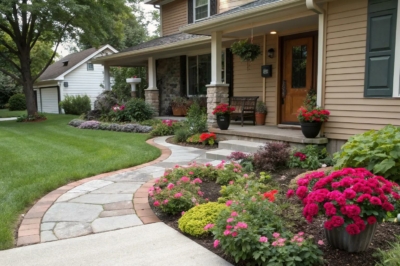1. Opt for Drought-Tolerant Perennials
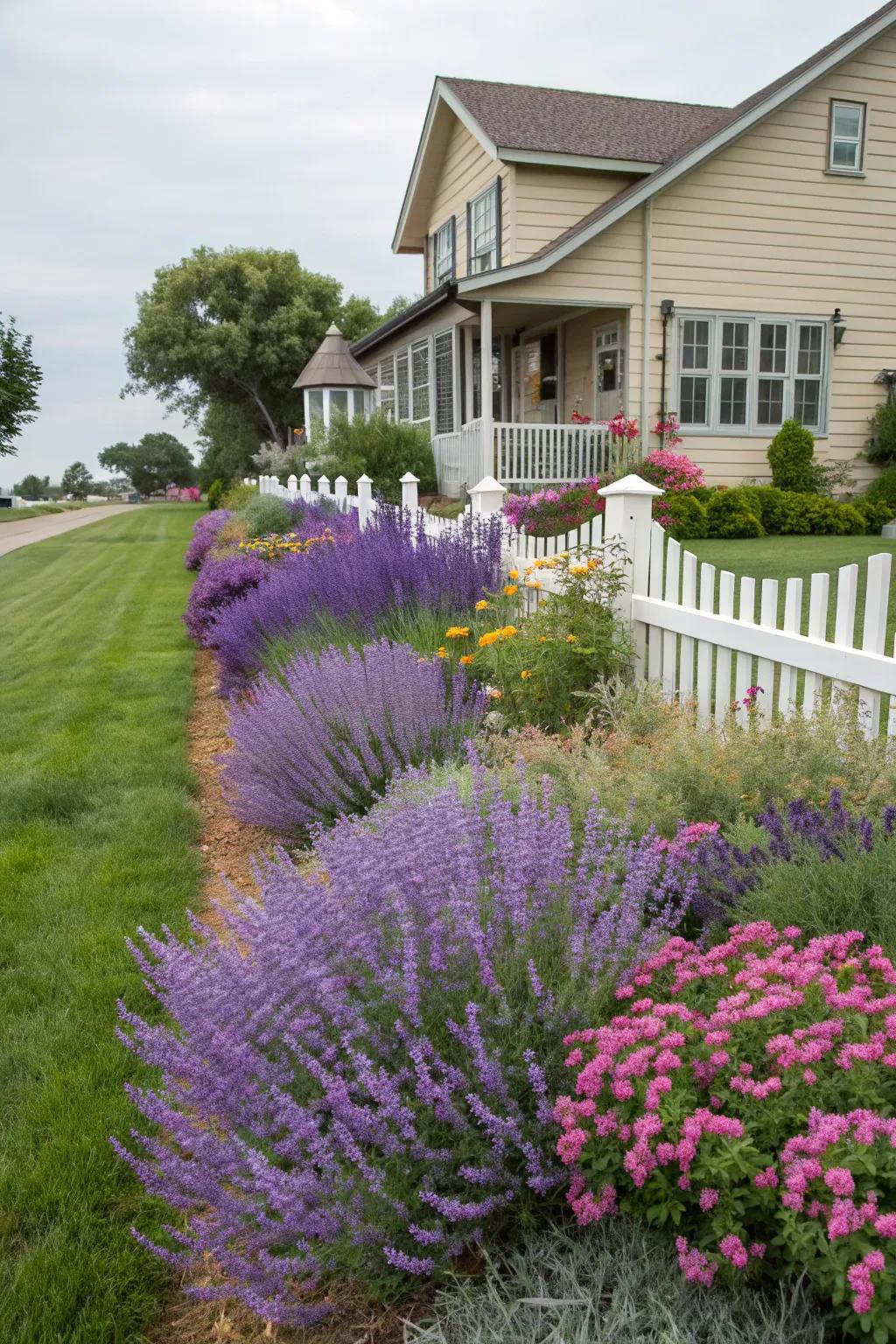
Perennials like lavender and Russian sage are perfect for low-maintenance flower beds because they thrive in dry conditions. In my own garden, these hardy plants provide lovely color and fragrance with minimal effort!
Consider these options:
- Lavender Seeds or Plants: Enhance your garden with easy-to-grow lavender, offering beauty and a soothing scent year-round.
- Russian Sage Plants: Add vibrant color and resilience to your flower bed with hardy Russian sage plants.
- Drought-Tolerant Perennial Mix: Create a lush, low-maintenance garden with this mix of beautiful drought-resistant perennials.
2. Incorporate Evergreens for Year-Round Appeal
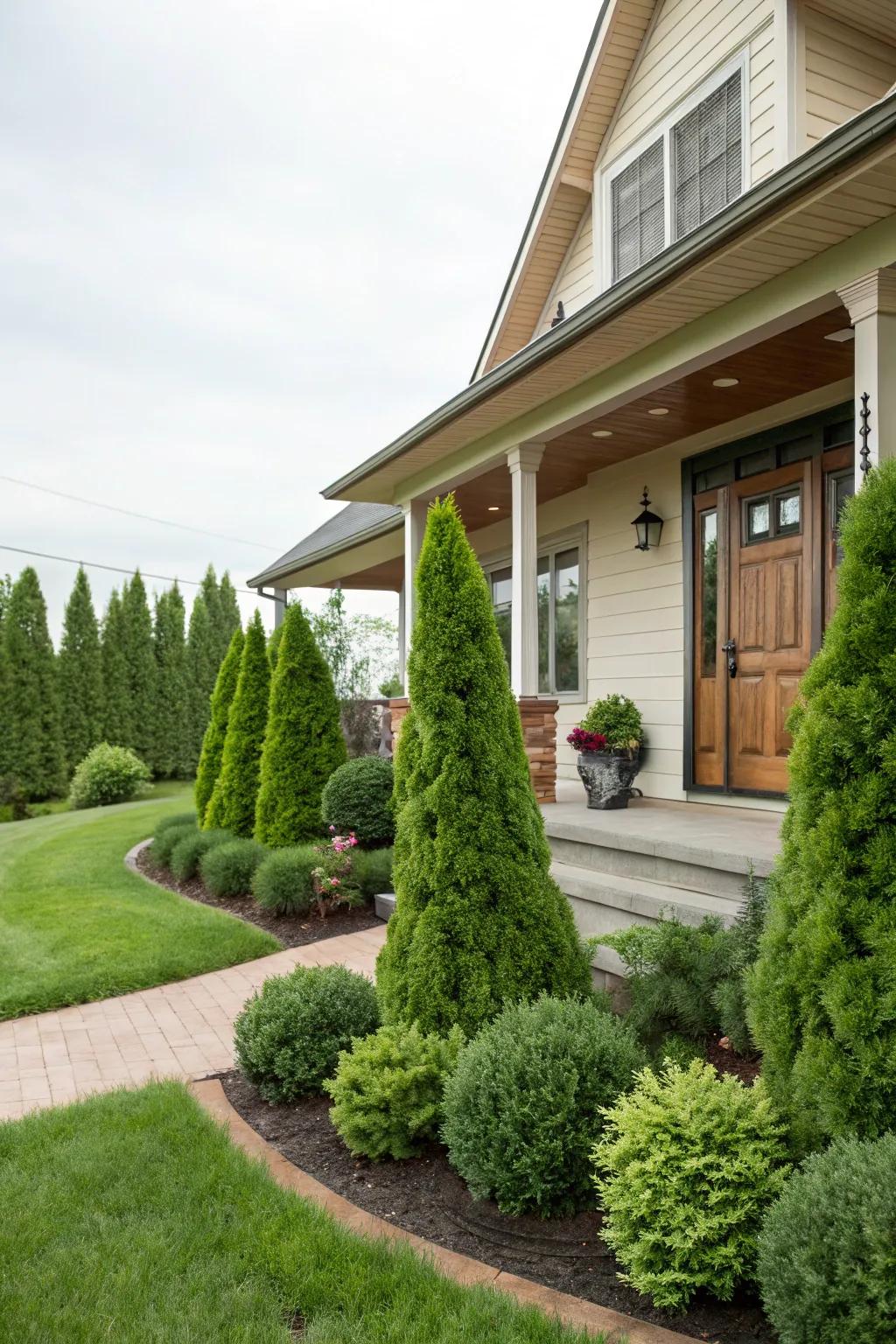
Evergreens such as boxwood or juniper provide structure and greenery all year long. In my experience, they are the backbone of any low-maintenance garden design.
Possibly handy products:
- Boxwood Shrub Seedlings: Enhance your garden with boxwood shrubs for timeless elegance and year-round greenery, effortlessly.
- Juniper Plant Starter Pack: Add juniper plants to your front garden for vibrant, low-maintenance, evergreen appeal all year.
- Evergreen Fertilizer: Nurture your evergreens with this fertilizer for lush growth and healthy, vibrant plants throughout the year.
3. Create Defined Borders with Stone
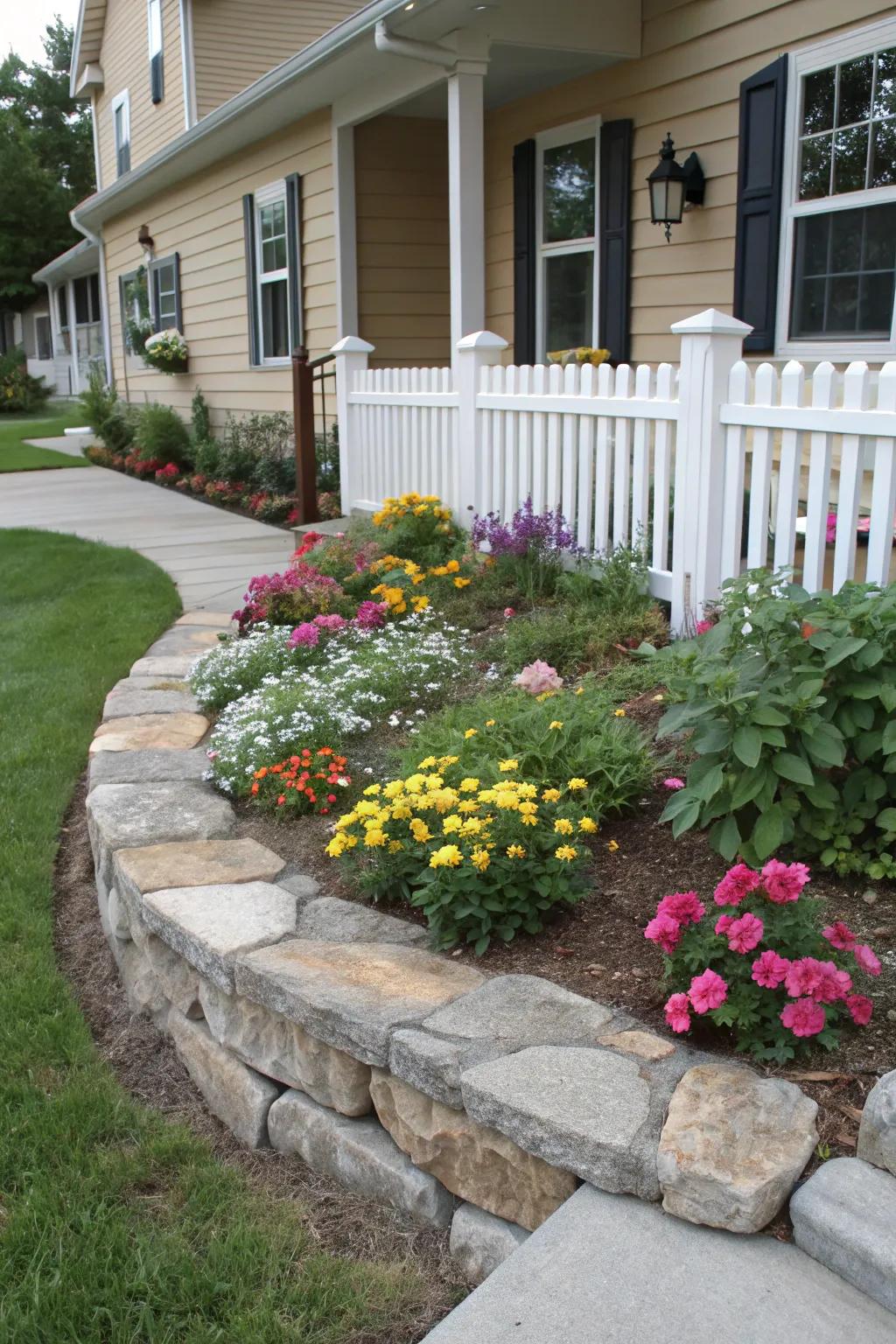
Using stone edging defines your flower beds and keeps them neat. I find that a well-defined border makes maintenance much easier and gives a polished look.
Explore these options:
- Garden Stone Edging Kit: Enhance your flower bed with this easy-to-install stone edging for a clean, polished look.
- Decorative Garden Edging Stones: Add elegance to your garden with decorative stones, ensuring neat and defined borders effortlessly.
- Natural Stone Landscape Border: Define your landscape beautifully with these natural stones, offering durability and low-maintenance style.
4. Use Decorative Stones for Accent

Decorative stones or pebbles can add pops of texture to your flower bed. I always find they provide an elegant touch with zero maintenance.
Try these:
- Decorative Garden Pebbles: Enhance your flower bed with elegant garden pebbles, offering texture without extra upkeep.
- River Rocks for Landscaping: Add sophistication and character to your flower bed using these versatile river rocks.
- White Marble Chips: Incorporate white marble chips for a sleek finish that elevates your garden’s appearance effortlessly.
5. Create a Shaded Retreat
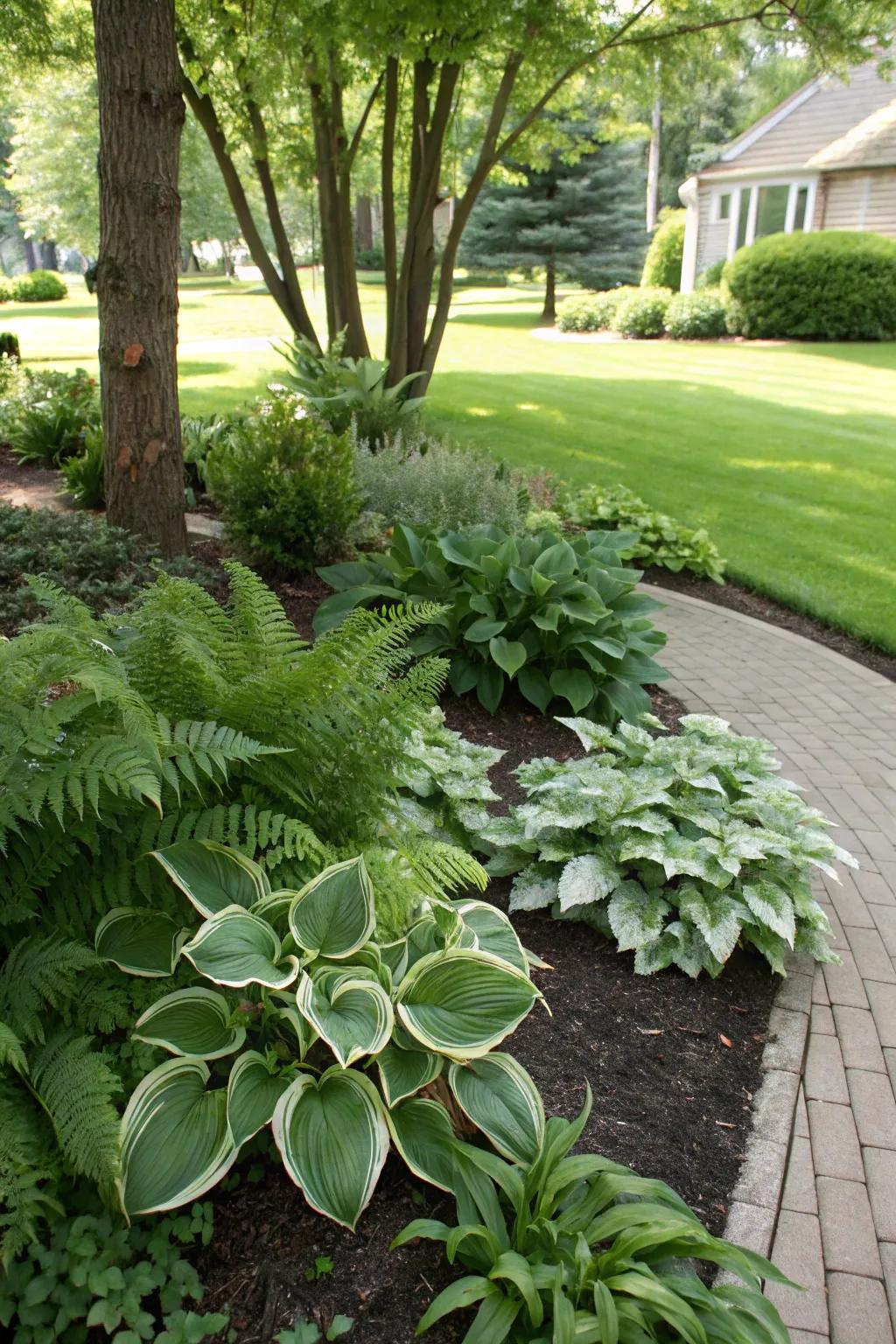
For shady spots, plant hostas and ferns for lush greenery. I’ve found these plants thrive in the shade and create a cool, inviting retreat.
You might give these a try:
- Shade Tolerant Plant Fertilizer: Enhance growth of your hostas and ferns with this specialized shade-tolerant plant fertilizer.
- Decorative Garden Edging: Define your shady retreat with stylish garden edging, adding structure to your flower bed.
- Drip Irrigation Kit: Maintain perfect moisture levels effortlessly with a drip irrigation kit for shade gardens.
6. Mix Plant Heights for Drama
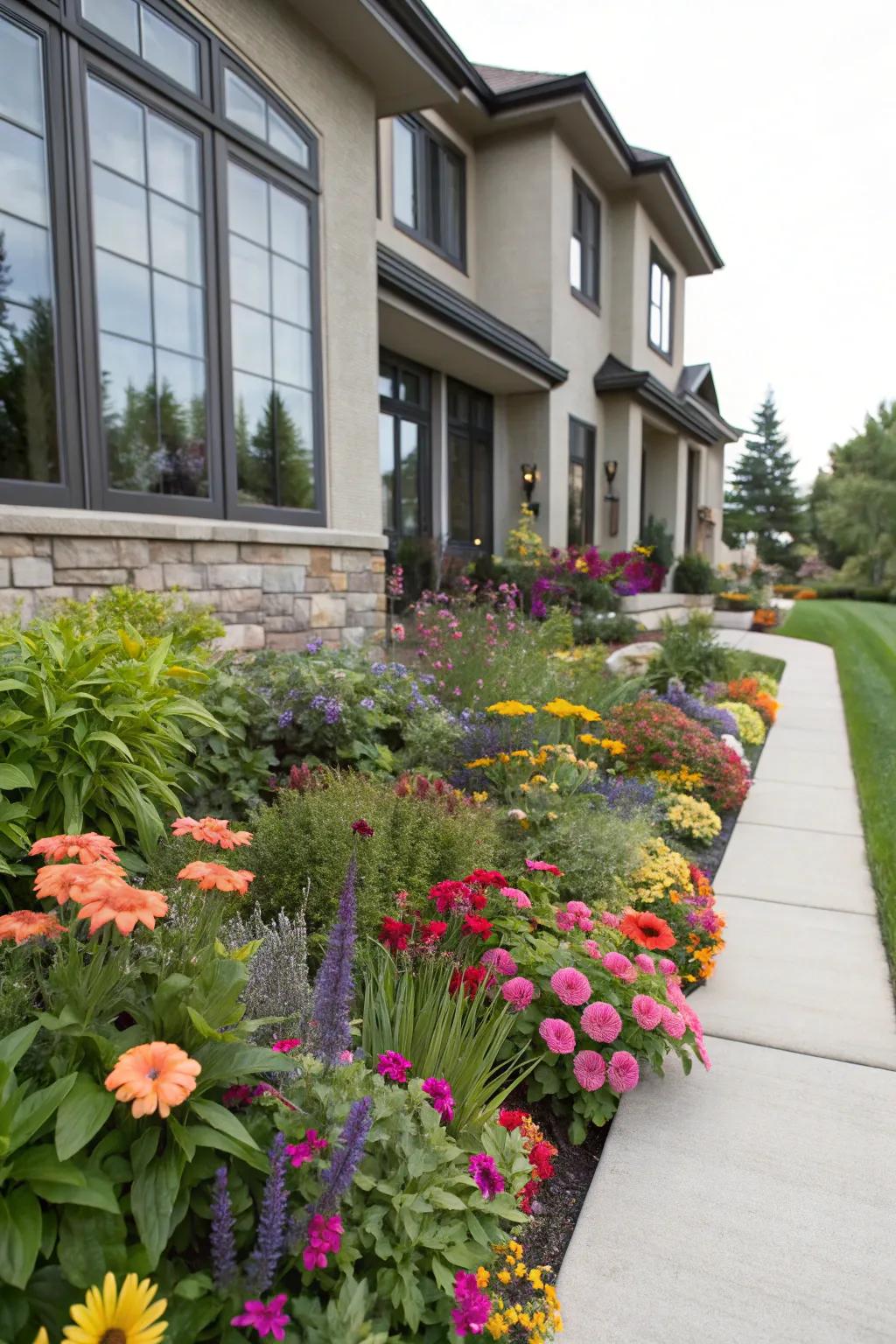
Combine plants of varying heights for a dynamic look. I love how this adds depth and drama to my flower beds without increasing upkeep.
Products that could assist:
- Assorted Perennial Flower Seeds: Cultivate vibrant blooms effortlessly. These perennials offer diverse heights and stunning colors.
- Adjustable Plant Support Stakes: Support taller plants for a dramatic effect. Adjustable stakes keep your garden neat and organized.
- Premium Soil Mix for Flower Beds: Enhance growth with this rich soil mix, perfect for maintaining vibrant, thriving flower beds.
7. Incorporate Edible Plants
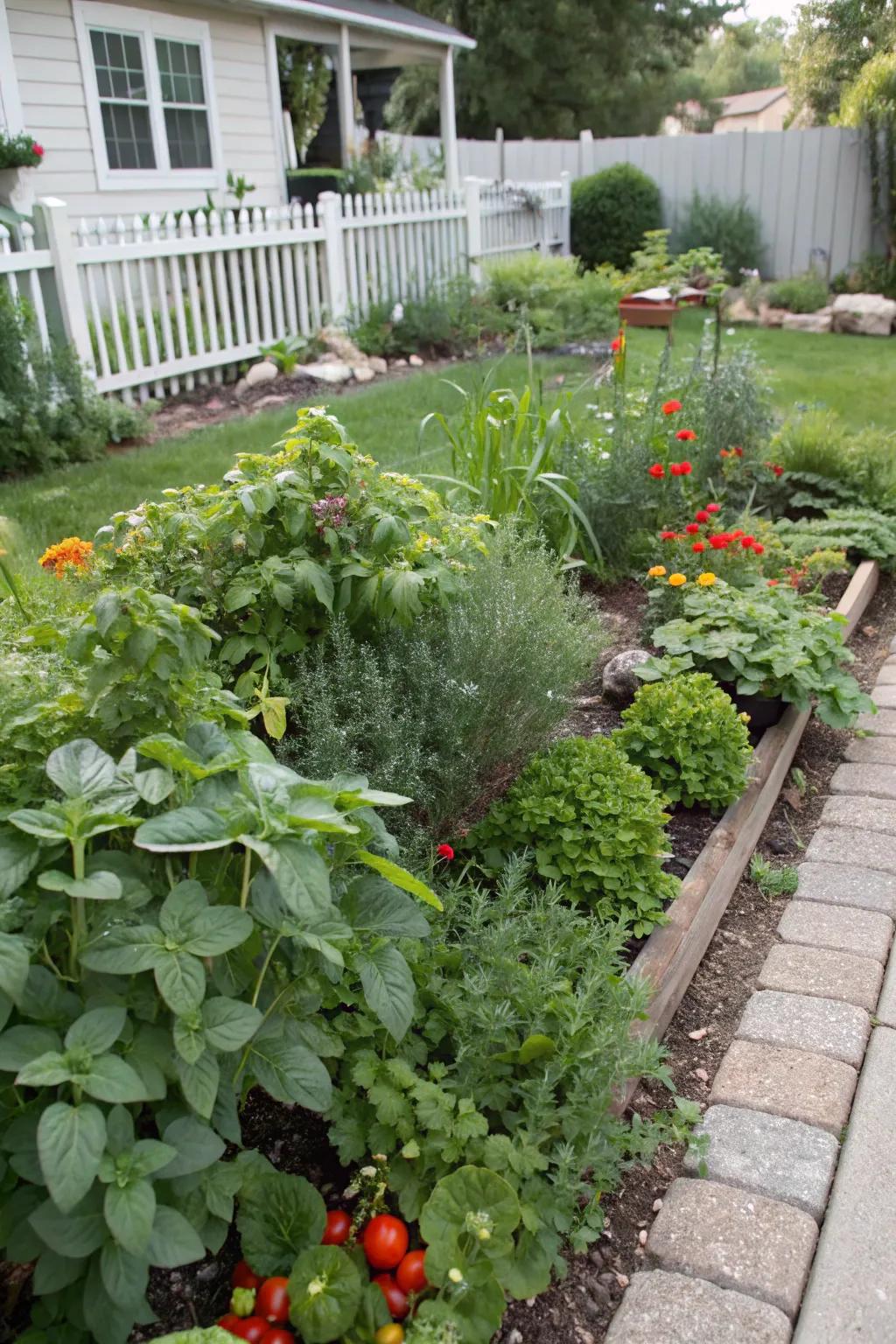
Why not plant a few herbs or vegetables among your flowers? In my garden, they offer beauty and a delicious bonus.
A few things you might like:
- Herb Garden Starter Kit: Start your herb garden effortlessly with this all-in-one kit, perfect for beginners and enthusiasts.
- Raised Garden Bed Planter: Elevate your gardening experience with a sturdy raised bed, ideal for edible plants and flowers.
- Organic Vegetable Seeds Variety Pack: Grow a variety of vegetables easily with this organic seed pack, perfect for fresh garden produce.
8. Include Flowering Shrubs for Easy Color
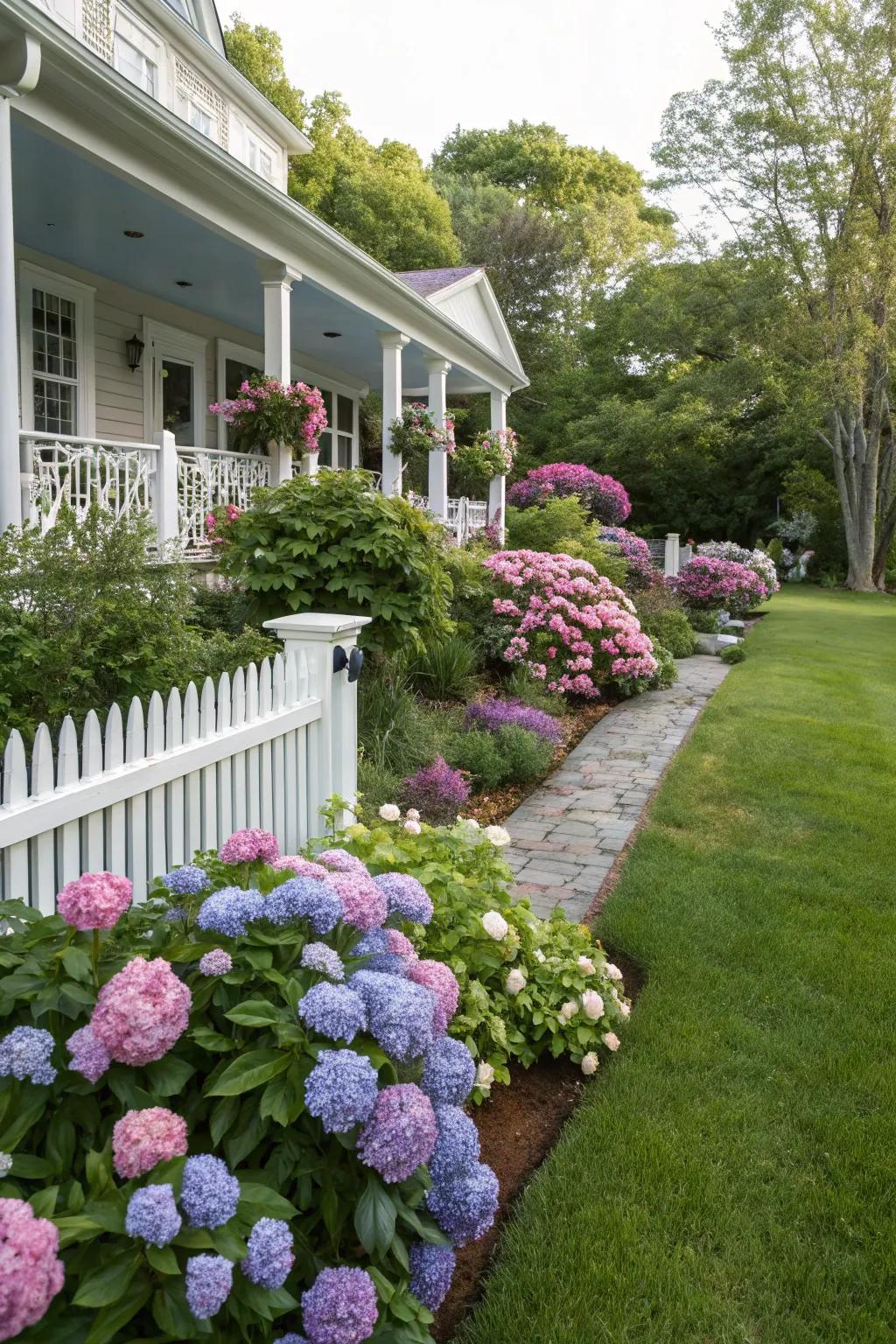
Shrubs like hydrangeas or azaleas offer bursts of color with little care. In my front yard, they are a reliable source of blooms each season.
Possibly helpful picks:
- Hydrangea Shrub Starter Plant: Enhance your garden with vibrant hydrangeas. Easy to plant and maintain for seasonal blooms.
- Azalea Shrub in Pot: Add lasting color to your yard with potted azaleas. Low-maintenance and visually striking.
- All-Purpose Shrub Fertilizer: Ensure your flowering shrubs thrive with this easy-to-use all-purpose fertilizer.
9. Focus on Color Harmony
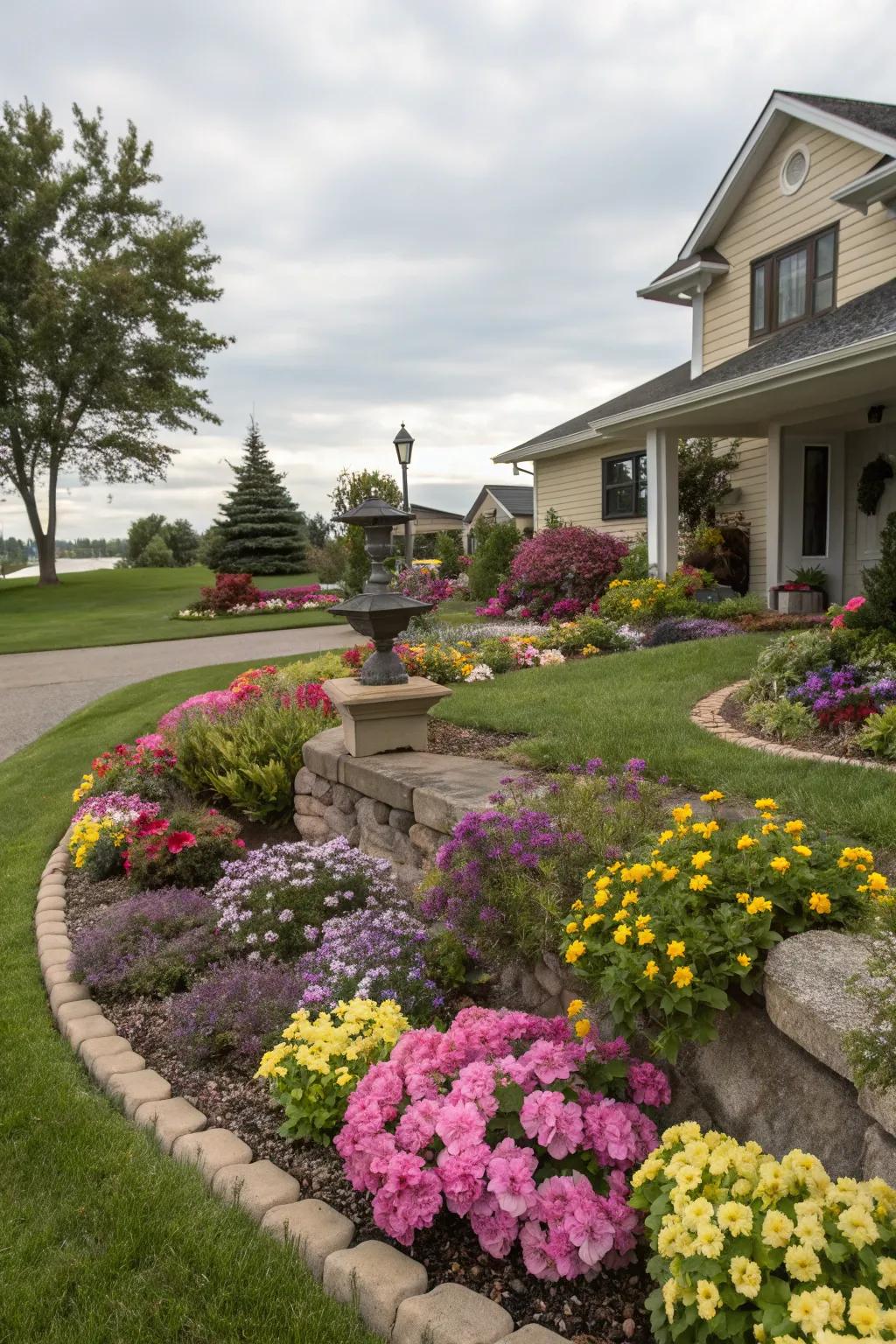
Choose plants with complementary colors for a harmonious look. I always aim for a blend that enhances the visual flow of my garden.
Give these a look:
- Mixed Annual Flower Seed Pack: Plant vibrant annuals for a burst of harmonized color that revives your garden’s aesthetic.
- Colorful Perennial Flower Bulbs: Introduce perennial bulbs for long-lasting color harmony throughout multiple growing seasons.
- Garden Soil Enhancer and Fertilizer: Boost plant growth and enhance colors with this essential garden soil enhancer.
10. Use Ornamental Grasses for Texture
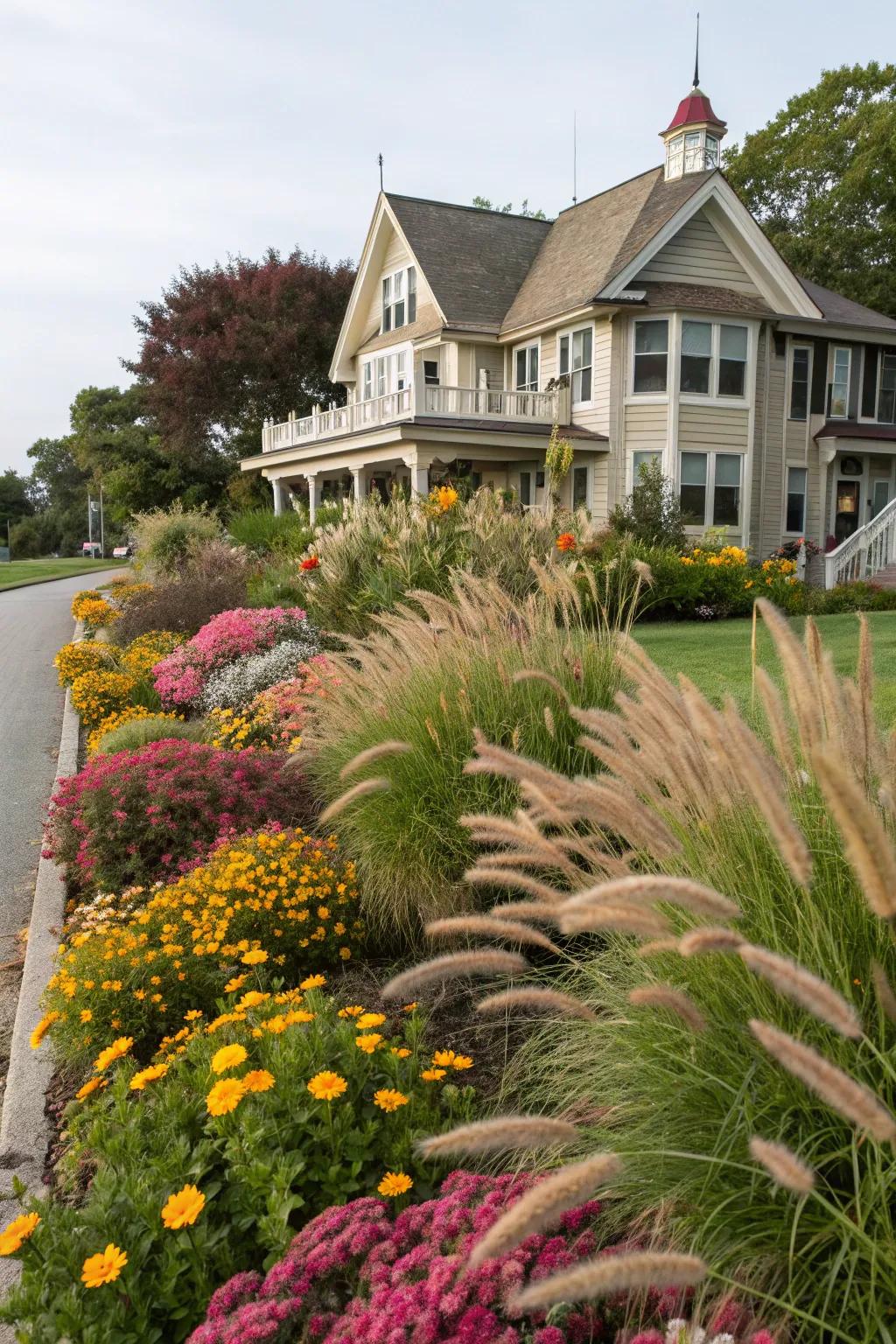
Add some movement and texture with ornamental grasses like carex and miscanthus. I love how they sway in the breeze, creating a dynamic yet low-maintenance landscape.
Check these products out:
- Ornamental Grass Seed Mix: Enhance your garden with diverse ornamental grass seeds offering texture and movement.
- Decorative Garden Mulch: Retain moisture and add contrast with decorative mulch, perfect for ornamental grass beds.
- Low Maintenance Garden Fertilizer: Boost your ornamental grass growth with easy-to-use, low-maintenance garden fertilizer.
11. Add a Water Feature for Serenity

A small water feature can transform your flower bed into a peaceful retreat. I love the calming sound it adds to my garden.
Check if these fit your needs:
- Compact Solar Water Fountain with Pump: Enhance your flower bed’s tranquility with a solar-powered water fountain. No wiring needed.
- Ceramic Cascading Tiered Fountain: Introduce peaceful sounds with a tiered fountain in your flower bed for easy elegance.
- Miniature Bamboo Waterfall Kit: Install a bamboo waterfall to add a natural, soothing sound to your garden setting.
12. Use Ground Covers Instead of Grass
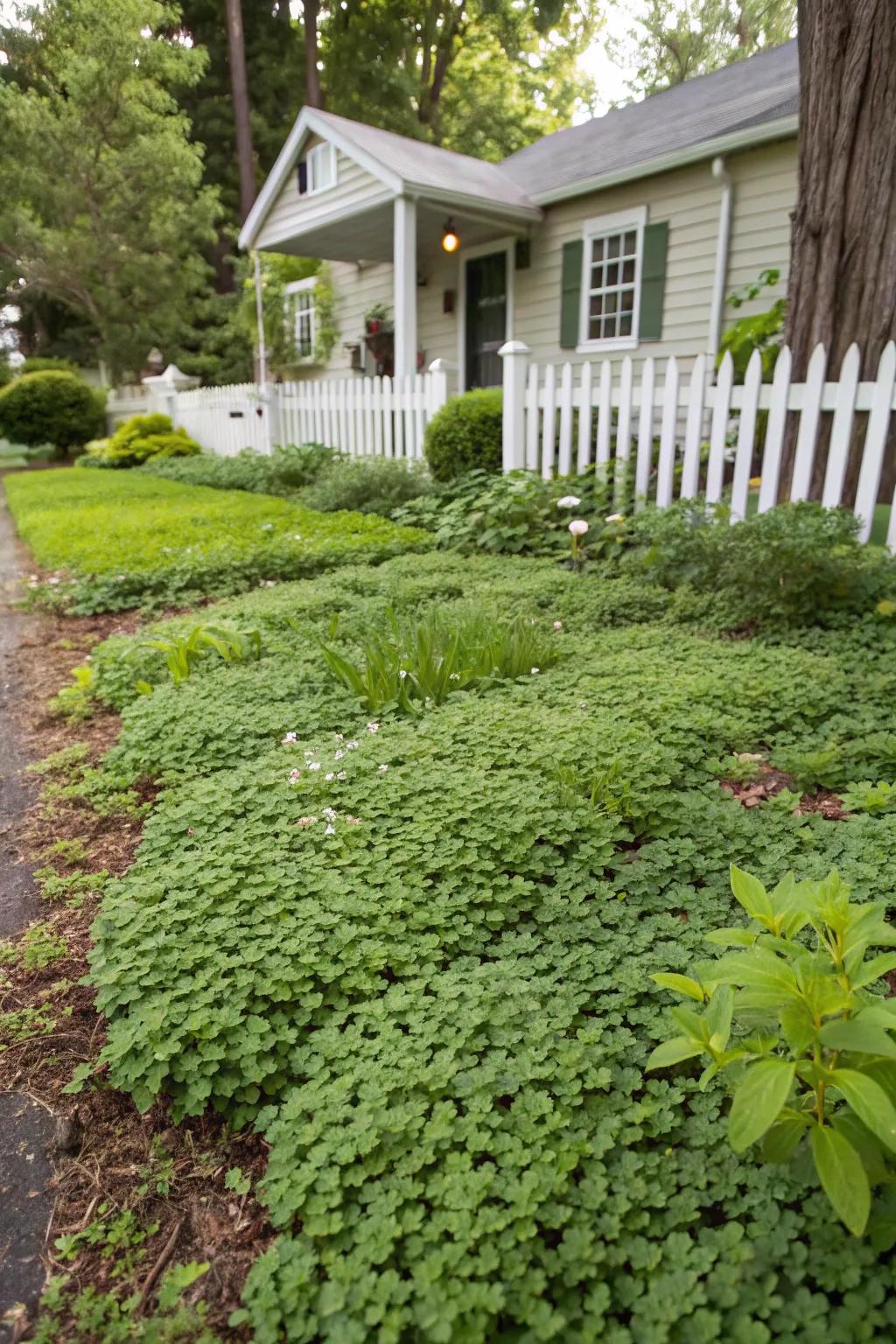
Replace grass with ground covers such as creeping thyme to reduce mowing and watering. I’ve found they create a lush and effortless green blanket.
Useful items to consider:
- Creeping Thyme Seeds: Transform your garden with easy-to-grow, fragrant ground cover that requires minimal maintenance.
- Ground Cover Mix Seed Pack: Create a lush, green area effortlessly with this diverse selection of ground cover seeds.
- Organic Garden Soil: Boost your garden’s health with organic soil, perfect for nurturing resilient ground covers.
13. Create a Cottage Garden Feel
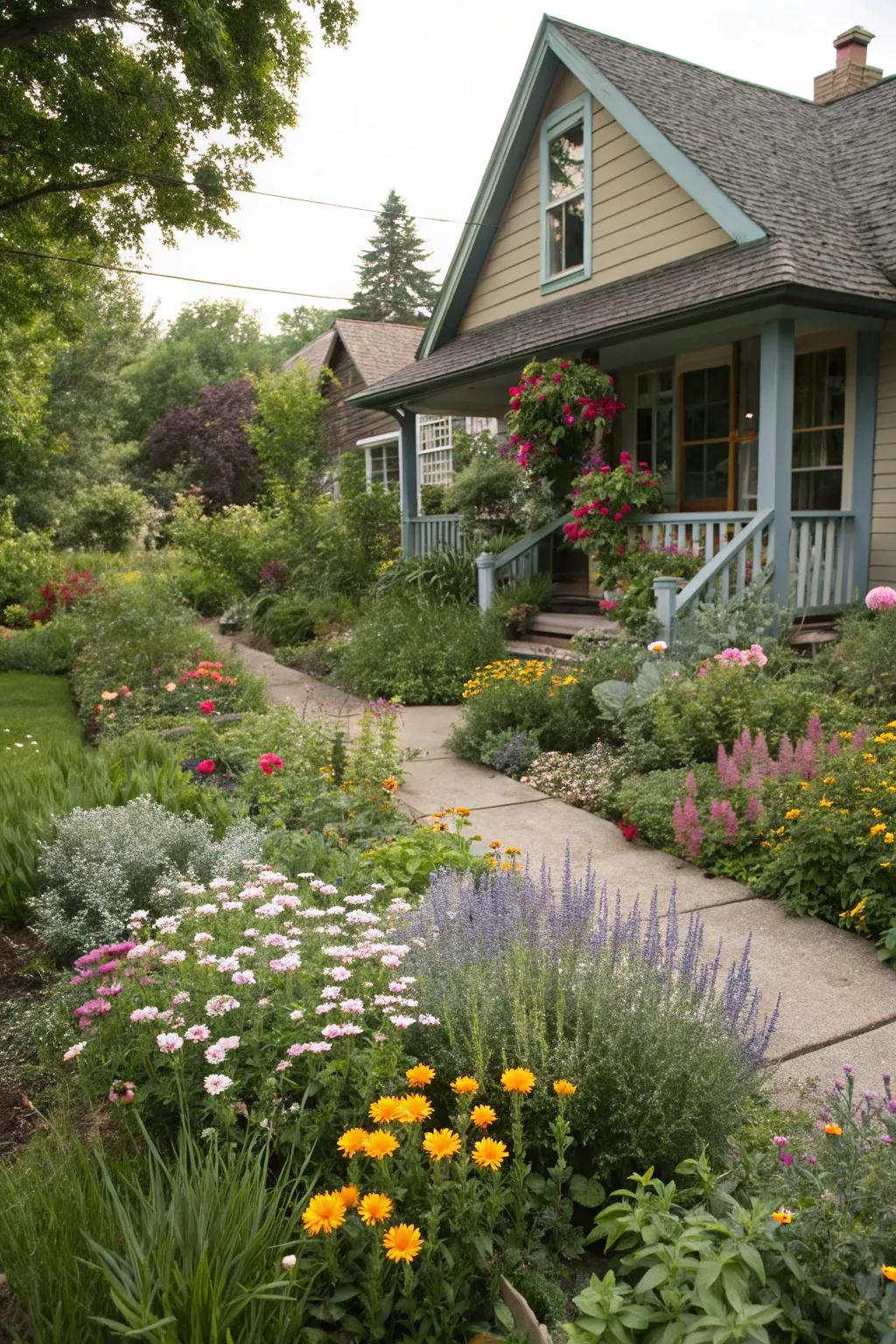
For a whimsical touch, mix wildflowers and herbs in your flower bed. This relaxed style has become a favorite in my garden!
A few relevant products:
- Wildflower Seed Mix: Transform your garden into a whimsical haven with diverse, easy-to-grow wildflowers.
- Herb Garden Starter Kit: Add aromatic charm with a variety of herbs perfect for outdoor cottage gardens.
- Gardening Hand Tools Set: Simplify garden upkeep with durable tools designed for planting, pruning, and harvesting.
14. Install a Simple Pathway
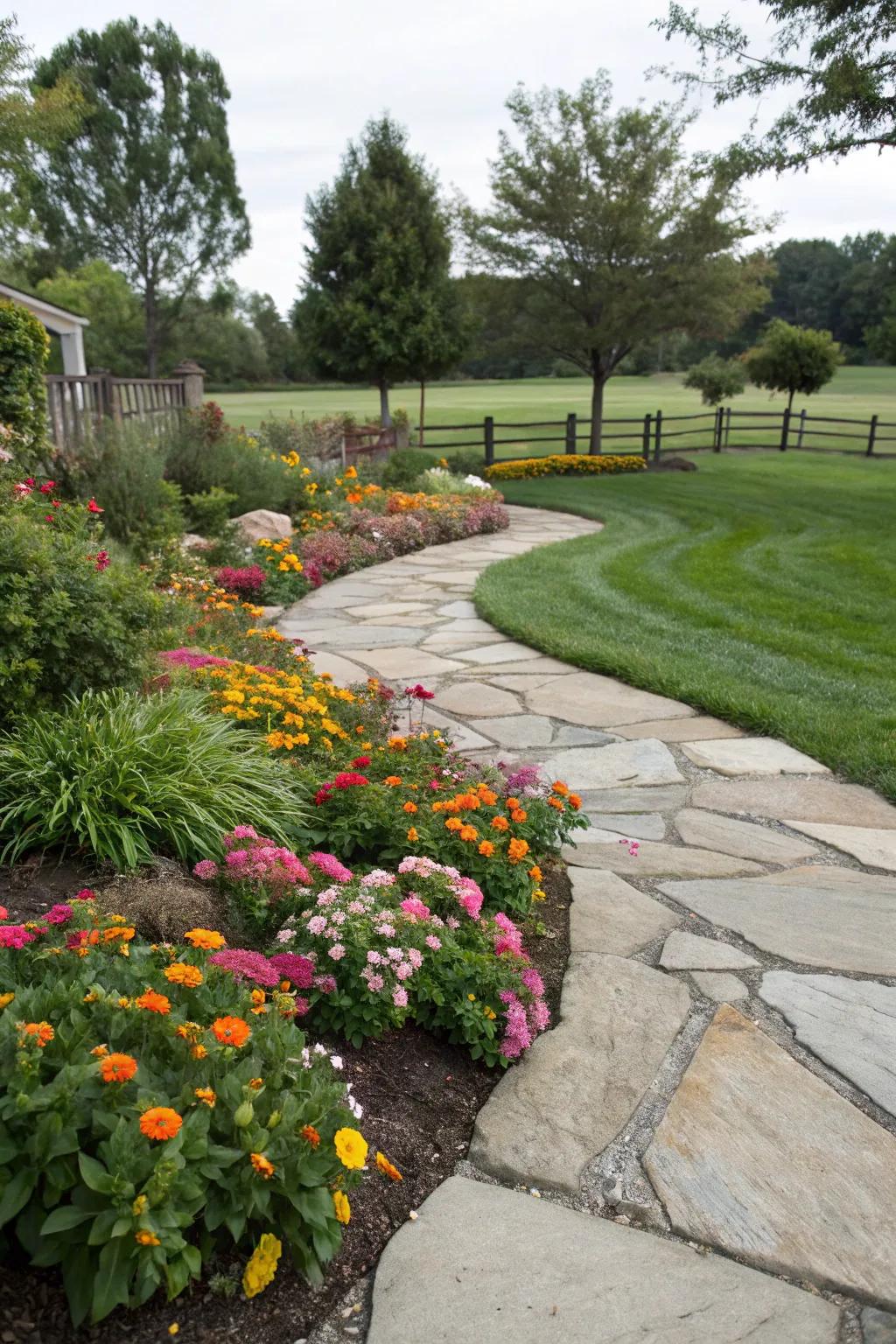
A stone or gravel pathway through your flower bed adds visual interest and accessibility. In my garden, it invites you to explore and enjoy the blooms.
Might be a good match:
- Natural Stone Pavers: Create a charming path. Durable, weather-resistant stones make your garden inviting and accessible.
- Decorative Gravel: Enhance your walkway. Decorative gravel boosts visual interest with low-maintenance charm.
- Landscape Edging: Define your pathway. Use edging to prevent gravel spill and maintain neat borders.
15. Choose Succulents for a Unique Look
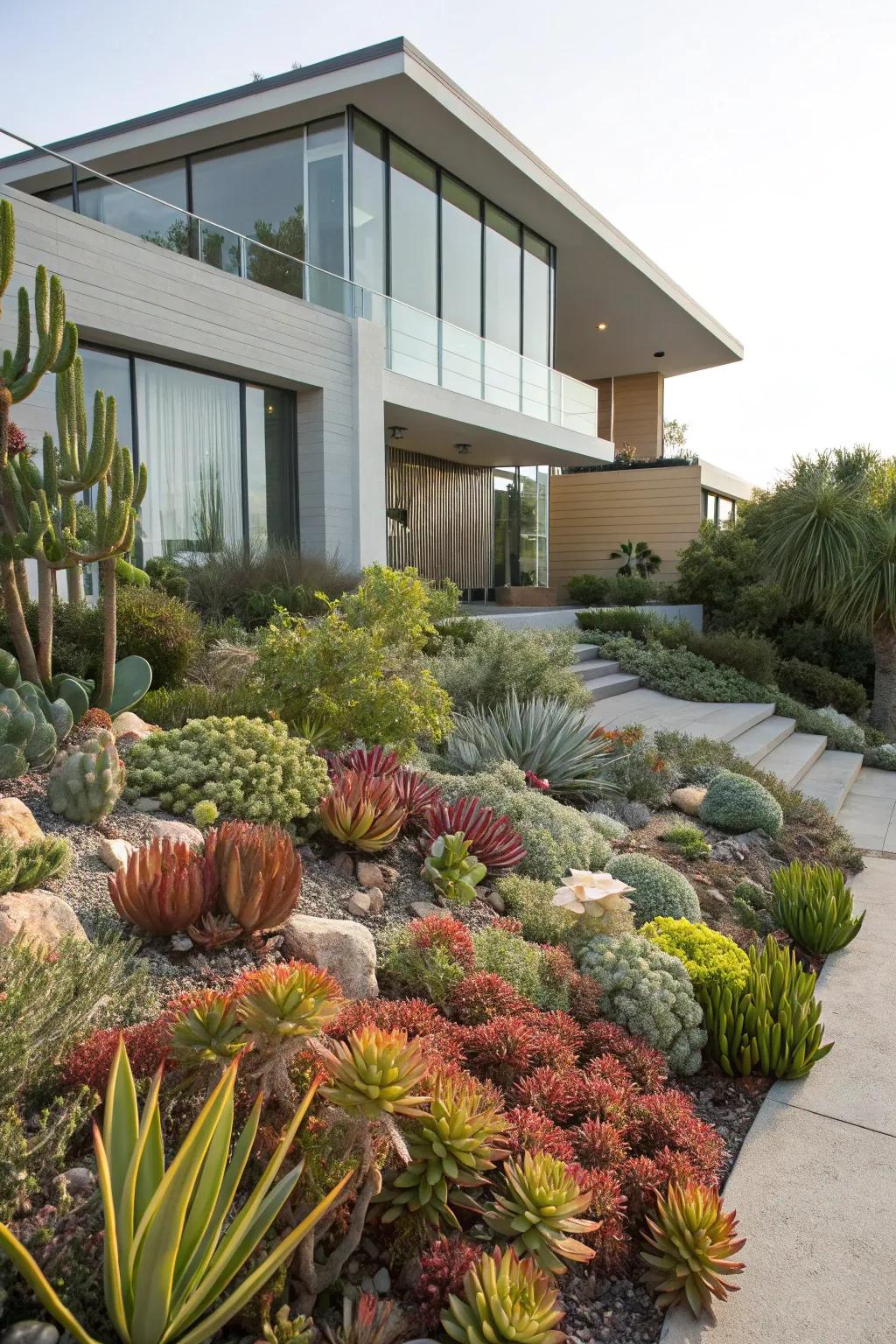
Succulents are easy to care for and offer a modern aesthetic. In my garden, they provide a striking contrast with traditional flowers.
These products might help:
- Live Succulent Plants Assortment: Transform your garden with vibrant succulents that are easy to care for and drought-tolerant.
- Decorative Pebbles for Succulent Gardens: Enhance your succulent bed with natural pebbles, adding texture and style effortlessly.
- Succulent Soil Mix: Ensure optimal growth with a premium soil mix designed specifically for succulent plants.
16. Experiment with a Rock Garden
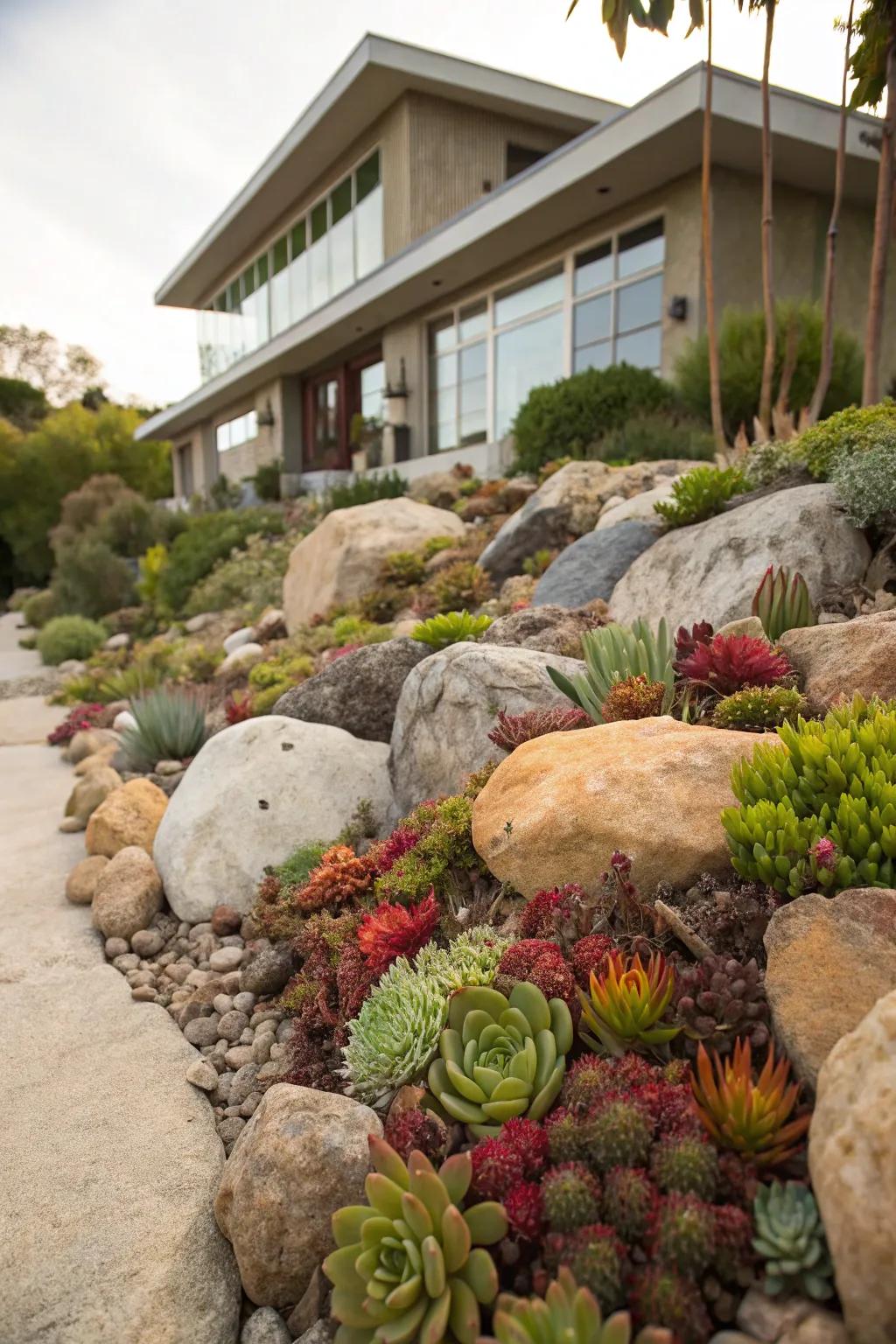
A rock garden can be both stunning and low-maintenance, especially when combined with succulents. I’ve found this to be a unique way to add interest without adding work.
You might like:
- Assorted Decorative River Rocks: Enhance your rock garden with beautiful, natural stones that require no maintenance.
- Artificial Succulents Set: Create a stunning look with lifelike succulents that thrive without watering or sunlight.
- Garden Weed Barrier Fabric: Prevent weeds effortlessly with breathable fabric, ensuring your rock garden stays pristine.
17. Incorporate Seasonal Bulbs
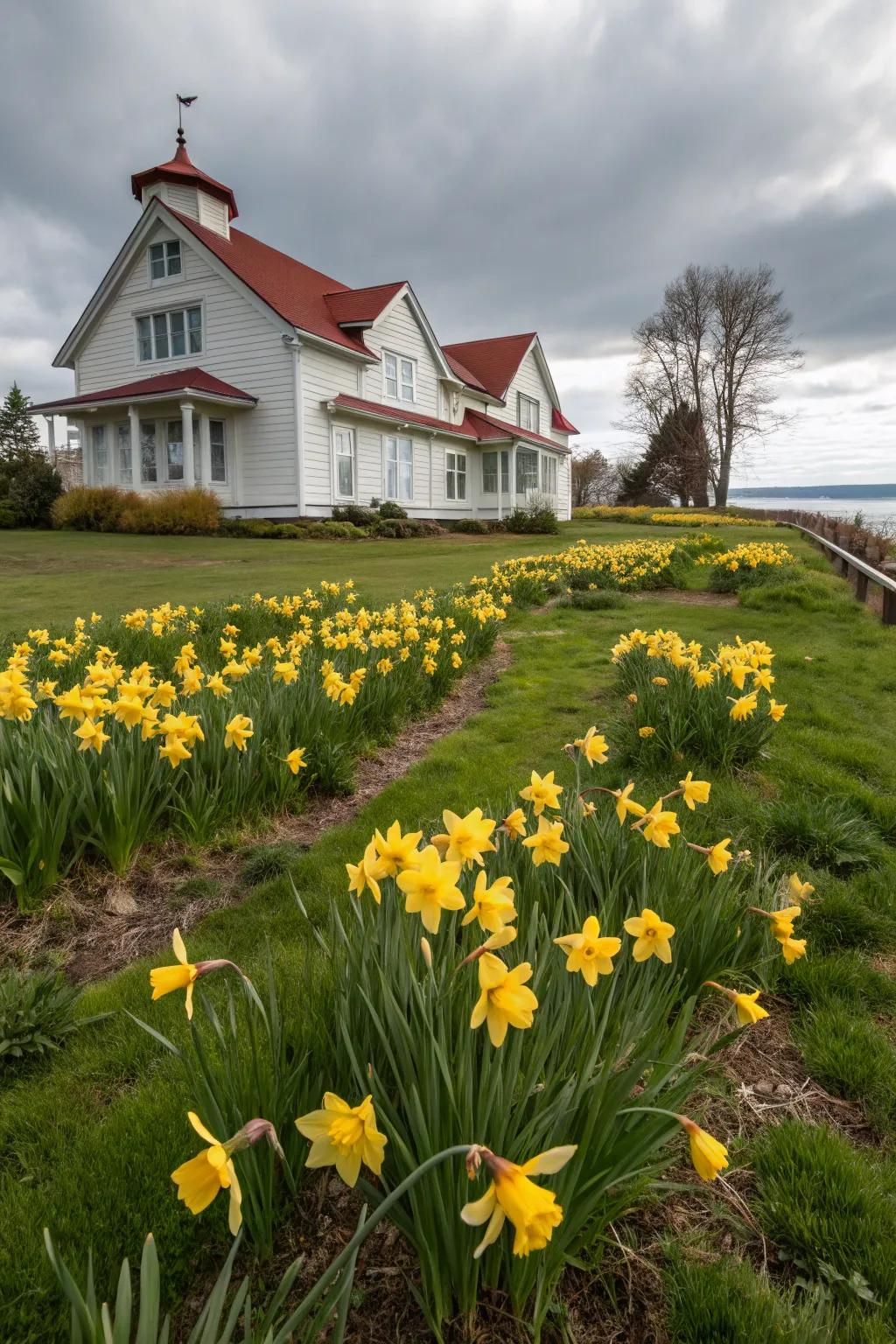
Plant bulbs like daffodils or tulips for seasonal color that returns year after year. They are a delightful surprise each spring in my flower beds.
Maybe worth checking out:
- Daffodil Flower Bulbs: Plant daffodil bulbs this fall and enjoy a vibrant spring garden with minimal effort.
- Spring Tulip Bulbs Mix: Create a colorful display with a mix of tulip bulbs that return annually.
- Bulb Planting Tool Set: Simplify your gardening with a tool set perfect for planting bulbs efficiently.
